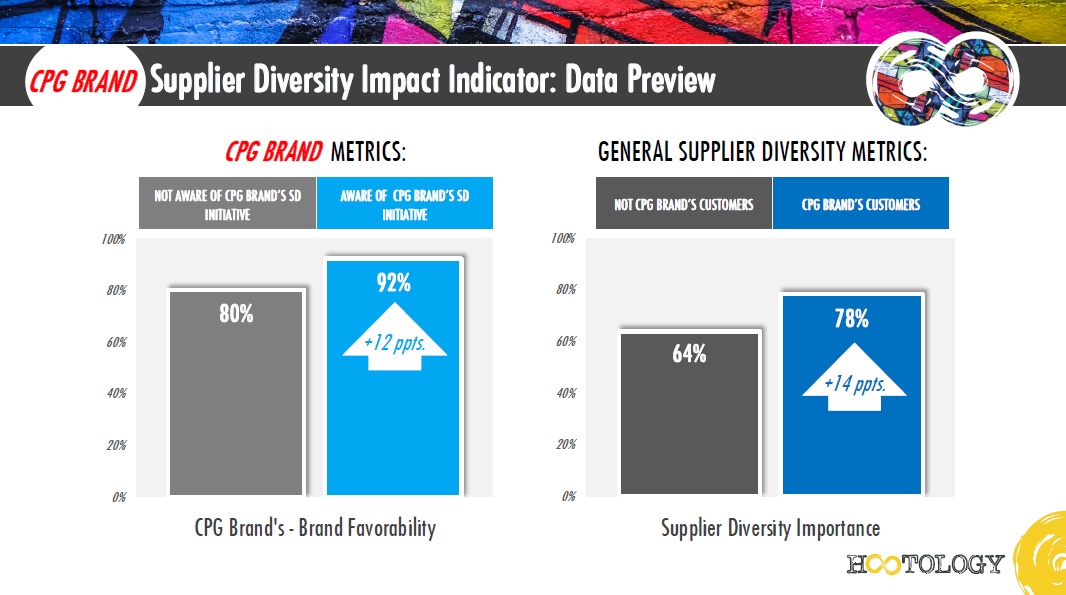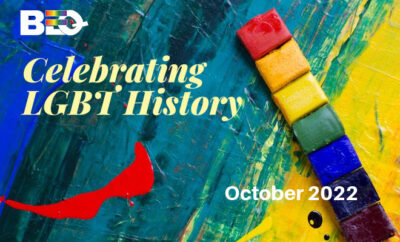
BEQ Today
Hootology elevates the supplier diversity conversation
By Melissa Lowery
In our March 2018 issue, we introduced you to Hootology, a new firm specializing in bespoke, tech-forward market research. We loved what founder Stefanie Francis was championing – the use of cutting-edge technology to get to the heart of consumer decision making. We were championing Francis as a diverse voice bringing much-needed innovation to market research.
“We create an experience around the information being gathered,” Francis told us then. “We bring in elements which make it an experience for the people who participate in our research, or it might be using AI in conjunction with a qualitative virtual discussion in a way that can get to the depth of loyalty quicker and in a more engaging way than an online survey. We are maximizing technology which exists to be able to gather better information.”
Today, Hootology is poised to change the way we talk about the value of supplier diversity with the Supplier Diversity Impact Indicator (SDII), a capability that measures the awareness and impact of a brand’s Supplier Diversity initiative on key customer purchase metrics.
Hootology, whose name marries ‘in cahoots,’ which speaks to their commitment to truly partnering with their clients, with ‘hootenanny,’ which honors their belief that remaining on the cutting-edge of technology and innovation will always be fun and interesting, and ‘-ology,’ which conveys their commitment to growing and learning relentlessly—in research, in business and, most importantly, in life. Their tag line is “Open minds, better decisions.” Hootology is radically open-minded market research for smarter business decision-making.
Beyond economic impact to the bottom line
We’ve grown accustomed to seeing a supplier diversity program’s success expressed through economic impact—the direct and indirect effect of doing business in the economy (jobs, income, tax revenue, etc.).
This type of analysis is usually summarized in an infographic showing the number of diverse suppliers in the program, the amount of direct and indirect spend with these suppliers and often the number of awards and recognitions shown as metrics. Economic impact is expressed as a monetary contribution to the economy overall, such as a specific number of jobs created as well as the earnings from the newly created jobs. This analysis is valuable to stakeholders (government leaders, media, local community, etc), persuasive from a corporate responsibility perspective and it aligns key metrics with a measure of benefit to society from a public relations perspective.
With the SDII, Hootology conducts original research by fielding a study with a sample of 3,000 representative U.S. consumers, balanced for things like gender, ethnicity, region and age, on topics such as brand favorability, perception of diversity and purchasing consideration. From the resulting data, they can drill down to show how supplier diversity influences overall brand perception in key demographics, what methods and initiatives have the most and least positive impact, how the brand compares to others in public perception and how these metrics translate to market share.
“Bringing an in-depth SDII report to a budget meeting during a planning session or year-in-review meeting to demonstrate results can go a long way toward growing stakeholder buy-in,” says Francis. It moves beyond the idea that supplier diversity is “the right thing to do” and legitimizes diverse, inclusive sourcing as another instrument to add value to the brand’s marketing via brand lifts and increased sales through consideration and usage of products and services among target consumers.
What Stefanie Francis and Hootology have created is a capability that uses data science and their innate curiosity and problem-solving skills, sprinkled with a bit of pure genius to link supplier diversity to metrics that grow the bottom line,” says Robin Dillard, our publisher and a recovering policy wonk and government economist. “This innovative approach has the potential to help expand the focus of the supplier diversity team from a primarily compliance and administrative related function to strategy and bottom-line growth.”
The impact to the bottom line is what the C-suite and shareholders care most about. Hootology’s SDII uses market research to reveal Supplier Diversity’s impact on arguably the most important economic indicator of all —a consumer’s willingness to make a purchase.
“Being able to see the link between supplier diversity awareness and the decision to buy a box of cookies is the beginning. Identifying new markets and engaging new talent, that’s the game changer,” explains Dillard.
Speaking of cookies, let’s take a look at an anonymous CPG brand’s SDII results to better understand the power of the capability. In this sample, of the CPG brand’s customers, 78 percent say supplier diversity is important to them, which is 14 percentage points higher than non-brand’s consumers. On a basic level, the CPG brand’s customers care about supplier diversity, so it makes sense to invest more into these programs.
The study further showed that the CPG brand sees a positive lift in its brand perceptions once consumers are aware of their supplier diversity initiative. While the CPG brand overall has a positive perception (80% of U.S. consumers think favorably about the brand), this indicator jumps to a whopping 92% once they are aware of the CPG brand’s Supplier Diversity Initiative.
And this is just the start of what the SDII can show. In addition to brand specific metrics, the SDII has a wealth of information about supplier diversity overall. For the many procurement providers such as Accenture, ConnXus or CVM Solutions who may support brands like our anonymous CPG brand and lead the charge on new procurement technologies, outsourcing services or setting industry standards, the SDII from Hootology allows yet another differentiating capability they could provide to their clients.
“Let me put it this way, besides its obvious relationship to efficiencies and excellence in supply chain management, supplier diversity is the sleeping giant when it comes to driving new routes to market and new routes to talent where people already know and understand its purpose,” says Dillard.
Inclusion matters
Stefanie herself is an example of what we have to gain from including diverse perspectives, voices and experiences. And that’s just what she did—brought a new perspective. The SDII is an obvious solution to a gap no one else saw in supplier diversity metrics. The data science know-how, mar-tech industry expertise and cutting-edge technology in this woman-owned, LGBTQ-owned small business has proven once again why diversity and, more importantly, inclusion matter.
Hootology’s SDII is making the case for the ultimate value of supplier diversity and a strong business case for broad program visibility. It’s time to support the supplier diversity conversation with hard-core market research.
Learn more about Hootology and the Supplier Diversity Impact Indicator at hootology.com.
Business Equality Pride (BEQPride) is the first publication from the BEQ family of national print and digital magazines exclusively addressing the needs of LGBTQ small-to-medium sized businesses, entrepreneurs and professionals.



















0 comments